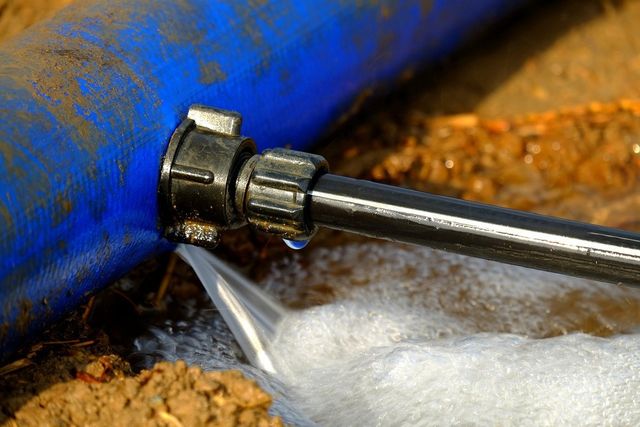Just about everyone may have their private opinions when it comes to Hacks to detect leaks.

Early discovery of dripping water lines can reduce a prospective disaster. Some small water leaks might not be visible.
1. Analyze the Water Meter
Every home has a water meter. Checking it is a surefire manner in which helps you uncover leakages. For starters, switch off all the water resources. Guarantee nobody will certainly flush, use the faucet, shower, run the washing maker or dish washer. From there, most likely to the meter and also watch if it will certainly change. Because no one is using it, there need to be no motions. That indicates a fast-moving leak if it moves. Likewise, if you discover no changes, wait a hr or more and also inspect back once again. This means you may have a sluggish leak that could also be below ground.
2. Check Water Usage
Evaluate your water costs and track your water intake. As the one paying it, you ought to see if there are any type of disparities. If you find sudden changes, in spite of your intake coinciding, it implies that you have leakages in your plumbing system. Remember, your water costs should fall under the very same array every month. An unexpected spike in your costs suggests a fast-moving leakage.
A consistent increase every month, also with the exact same behaviors, reveals you have a slow leak that's also slowly escalating. Call a plumber to extensively examine your residential or commercial property, particularly if you feel a warm area on your floor with piping below.
3. Do a Food Coloring Examination
When it comes to water intake, 30% comes from commodes. If the shade somehow infiltrates your bowl throughout that time without flushing, there's a leak between the container and bowl.
4. Asses Outside Lines
Don't fail to remember to check your outdoor water lines also. Needs to water permeate out of the connection, you have a loose rubber gasket. One tiny leakage can lose bunches of water and also increase your water expense.
5. Evaluate the circumstance as well as check
Property owners ought to make it a practice to inspect under the sink counters and also inside cabinets for any bad odor or mold and mildew development. These 2 red flags suggest a leakage so punctual focus is required. Doing routine examinations, also bi-annually, can save you from a major problem.
Inspect for stainings and compromising as a lot of appliances and pipes have a life expectations. If you believe dripping water lines in your plumbing system, do not wait for it to intensify.
Early detection of leaking water lines can mitigate a possible catastrophe. Some tiny water leaks might not be visible. Examining it is a guaranteed method that helps you find leaks. One little leak can waste heaps of water as well as increase your water bill.
If you suspect dripping water lines in your plumbing system, don't wait for it to intensify.
How to Know If Your Home Has a Hidden Leak
Water Meter Reveals Inexplicable Water Usage
If you’d like to test whether or not there’s a leak somewhere in your home, you can do this using your water meter. Here is how to conduct the test:
Don’t use any water in your home for at least 30 minutes; this also means not turning on faucets or water-using appliances.
Go outside, and check your water meter for activity.
If your water meter shows that there was activity, even though no one was using any water, this proves that there is a leak in your home.Visible Mold or Mildew Growth
Leaks behind walls create moist, dark environments that allow mold and mildew to grow and thrive. Eventually, you might see mold growth forming on the wall closest to a hidden leak.
If mold is growing in an area that receives a high amount of moisture, such as a bathroom, it may simply be an indication that better ventilation is needed. However, if you see mold growth on a wall or the ceiling in an area where you would not expect, you probably have a hidden leak.
Musty, Mildew Odor
Sometimes you might not be able to see the mold or mildew that is growing as a result of a leak. However, the smell can give the problem away just as easily. If you catch a whiff of something musty, there’s a good chance that old water is collecting somewhere in your home that you can’t see.
Stained/Warped Walls, Ceilings, or Floors
When your home soaks up water, a variety of red flags can become visible, including ceiling stains, bubbling drywall, warped walls, and sagging floors. While these issues can be caused by excess humidity, they can also be signs that a pipe or plumbing connection has started leaking behind your walls.
Inexplicably High Water Bill
After a while, you get a general sense for what your water bill should be. If you own a pool or sprinkler system, your bill will tend to be higher during summer. However, if you receive a water bill that seems especially high, and you can’t figure out what caused it, then you may have a hidden leak somewhere that’s increasing your bill.
https://www.plumbingjoint.com/blog/2019/july/how-to-know-if-your-home-has-a-hidden-leak/

Do you really like more info about Finding hidden leaks? Post feedback down below. We'd be glad to see your opinions about this posting. Hoping that you visit us again in the near future. Sharing is good. Who knows, you may very well be helping someone out. I enjoy reading our article about Detecting hidden plumbing leaks.
Visit Homepage